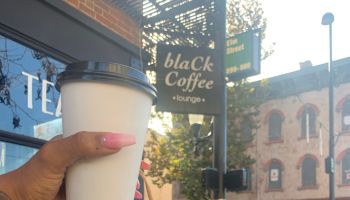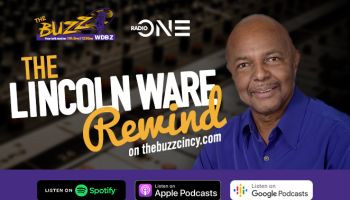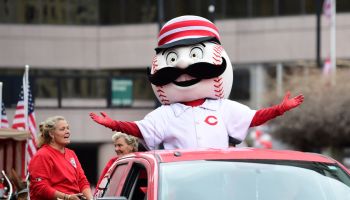via: Nia-Malika Henderson, Politico.com
In tackling the problem of childhood obesity, first lady Michelle Obama is doing something that her husband rarely does — talking about an issue bluntly in terms of race and helping urban America.
She is, some say, filling a role that Barack Obama seems less inclined to fill, serving as a kind of bridge from the White House to black America in much the same way that she functioned during the campaign, observers said.
Where President Obama has been reluctant at times to address domestic policy in terms of how it would specifically affect African-Americans or Hispanics, Michelle Obama has approached her signature issue differently, frequently bringing up issues of race, region and inequality.
The first lady provided a vivid example Friday of her approach to childhood obesity, touring the Fresh Grocer in North Philadelphia, a predominantly black neighborhood that had been without a grocery store for more than a decade. The $15 million store opened in December, created 270 jobs and has a 96 percent minority workforce. The store, located near Temple University, is located in Progress Plaza. Aides to the first lady said the goal is to highlight how neighborhoods have addressed the problem of “food deserts,” neighborhoods that lack a full-service grocery store.
“It’s a nuanced conversation about race and place and economic inequality, and at the same time, she is staying within the first lady framework,” said Melissa Gilbert, a professor in the urban studies department at Temple University. “It’s a very smart approach because she is bringing up issues that people haven’t thought about in the popular mainstream society.”
Over the past month, as she has rolled out her Let’s Move initiative, the first lady has spoken broadly of childhood obesity as a problem that confronts children everywhere, but she also frequently mentions the disproportionate effect it has on black and Hispanic children. One in two minority children deal with being overweight compared to one in three white children.
“Because right now, if we think about our children, nearly a third of them in this country are overweight or obese, and a third will suffer from diabetes at some point in their lifetimes. In the African-American and Hispanic communities, that number goes up to half,” she said during one recent speech on health care and childhood obesity.
And in speeches and interviews, she has also addressed the issue of unsafe neighborhoods and often framed the problem as a particularly urban one.
She spoke of the difficulty some children have getting daily exercise. “Urban sprawl and fears about safety often mean the only walking they do is out their front door to a bus or a car,” she said when she launched the program earlier this month.
Speaking of the lack of healthy food options in some urban neighborhoods, Obama said, “And we certainly can’t ask parents who are living in the midst of food deserts without the resources to buy the products and the items for their families, we definitely can’t put them into that trick bag of telling them that they need to do something that is completely out of their reach.”
And she told of her own experiences as the mother of two young daughters. “I was fortunate enough to have a pediatrician who worked in an urban environment in the African-American community,” she told CNN’s Larry King about how she came to the issue. “And he was tracking BMI [Body Mass Index]. And he saw a little uptick in the kids’ BMI and he kind of pulled me aside.”
East Wing aides worked with the White House Office of Urban Affairs in planning for the trip to Philadelphia. And on Saturday the first lady will address the National Governors Association convention in Washington, and appear on Mike Huckabee’s Fox News show, as she ramps up her national public education initiative to fight childhood obesity.
The effort marks her first full foray into policy after a year marked by sustained outreach to metro Washington. She has visited schools, started a mentoring program for young women and invited students to help cultivate and harvest the garden on the South Lawn.
And even when the first lady traveled abroad last spring to London, she made her first speech to a group of inner-city minority students, telling them that she was raised in the “real part of Chicago” and that it was “important for the world to know that there are wonderful girls like you all over the world.”
It was similar to what she told a group of students at Anacostia High School as she sat with them in a classroom, recalling that she had been ribbed for talking like a white girl.
Del. Eleanor Holmes Norton (D-D.C.) said that Obama “plunged into the district” and hasn’t been content to see “D.C. as a nice backdrop with a lot of black and Hispanic faces.”
“In a country where race rules, she is seen over and over with black children, but it doesn’t send out the same racial vibes,” Norton said. “Barack hasn’t hung back, but she does have greater license to go into the black community without seeming to cut off white people as the president might. And he wouldn’t be doing that, but perception is reality.”
It is an approach, both symbolic and substantive, that hasn’t gone unnoticed by observers of race and urban policy, who had hoped that her husband would live up to his tag of being the first big city, urban president, but have since been disappointed.
For some, Obama’s four-hour trip to New Orleans exemplified his approach to the issues confronting urban America. Critics say that though he created the White House Office of Urban Affairs, he has yet to articulate an urban agenda that has taken hold in the public consciousness.
Last year in a White House meeting with the Congressional Black Caucus, Barack Obama privately told the group “we have to do something about obesity among our people.”
Speaking more broadly, he told American Urban Radio Networks recently that: “The only thing I cannot do is, by law I can’t pass laws that say I’m just helping black folks. I’m the president of the entire United States.”














